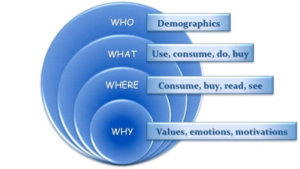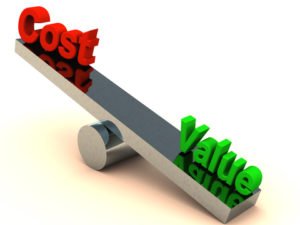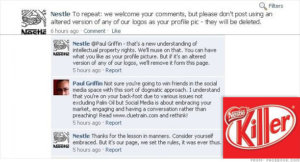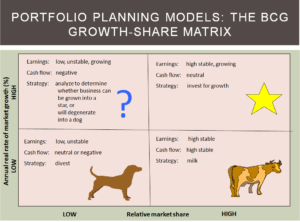Be a true leader; share this post with the members of your team who need the inspiration and support.
Your boss expects you to be able to answer all his questions and especially to know your customers. Here are the 13 things your boss is likely to ask you and a handy Checklist to prove to him that you know your customers better than he realises.
Everyone speaks about customer centricity and the importance of the customer, but just how well do you know yours – really? The following is a checklist of 13 facts you need to be able to answer in order to know your customers as well as you should.
As you read the post, keep tabs on your answers and share your final score below. I’m offering a personal 50% discount code to spend in store for everyone who publishes their score here in July 2018. And if you’re the boss, I’d love to hear how well you think your team would do – 100% of course, no?!
#1. Who is your customer?
 OK I’m starting off slowly, but do you know who your customers are? Not who uses your category, but who the people are that actually buy your product or service today? How much do you really know about them?
OK I’m starting off slowly, but do you know who your customers are? Not who uses your category, but who the people are that actually buy your product or service today? How much do you really know about them?
Their age, gender and location are the basics, but there’s a lot more you need to know about them. Check out “12 things you need to know about your target customers” for more on what you need to know to be able to describe them in the depth your boss expects.
The C3Centricity 4W™ Template is a great resource for storing all the information you have on your customer. Download a free copy and watch the related videos HERE.
#2. What business are you in?
Although this refers more to the category than the customer, it is important to ensure you are looking at it through the eyes of your customers. Many organisations are working with industry definitions rather than customer ones. What about you? If you want to know your customers, you need to understand what category they think they are buying.
This is one of the essential elements you need to understand in order to know your customers deeply. It is something that many organisations don’t take the time to clearly identify, which results in an incorrect appreciation of their market and competitors. By not correctly identifying the category you are in, or plan to enter, your innovations will also lack the success you are hoping for.
For instance, are you in the food business or the pleasure business, beverages or relaxation? One of my clients wanted to launch a fruit flavoured soft drink and thought they were competing with other soft drinks. When we worked together we discovered that they were actually competing in the energy drink business! Reklama internete ir SEO optimizacija https://seopaslaugos.com/117-seo-optimizavimas
How many of your brands are not competing where you thought they were? See “How to Innovate better than Apple” for more on this topic.
#3.Who are your major competitors?
 Again another slow starter to show you know your customers. Here you want to make sure that you have correctly identified what market you are actually competing in and who are your competitors. It just might not be the one you think!
Again another slow starter to show you know your customers. Here you want to make sure that you have correctly identified what market you are actually competing in and who are your competitors. It just might not be the one you think!
Also, do you know as much about your competitors’ customers as you do about your own? Complete a SWOT to know exactly where you stand with them – although it’s probably best to wait until you have read the next eleven points before actually doing this.
Once you know who your competitors are, use the 4W™ Template again for each of the major ones and add information to it every time you learn something new about them.
#4. What do they buy?
What and where your customers buy your product should have been covered in point #1. (If it’s wasn’t, make a note to gather that information and add it to your 4W™ template.)
Now you should look at how much your customer spends on your product or service and how much they have available. How does what they spend compare with the amount they spend on your competitors? Is your share of category and wallet growing? If not, why not?
Other information you need to gather to know your customers in this area is how they react to promotions. Do they only buy on promotion? Do they buy in bulk? Do they have size or packaging preferences? All this information will help you to get into the head of your customers and really know them.
Understanding the shopper, who is not always the person who uses or consumes your product, is also essential information you need to have at your fingertips for this section. If they are different people (mothers, housekeepers, single mums) then I would suggest you also develop a 4W™ Template for the shopper too. In this way you can compare and understand the similarities and differences between the buyer and the consumer. I’m sure that having personas for both will also impress the boss and show him/her that you really know your customers!
#5. What does your customer need?
I’m not speaking about what he says he needs, but what he really needs and perhaps doesn’t even know yet. What would surprise and delight him? What does he need that he only knows he does when he sees it?
Sometimes customers will compensate without even realising it. By watching and listening to them you will know your customers well enough to be able to offer them even more (satisfaction). Read “Five Rules of Observation and Why it’s Hard to Do Effectively” to become an expert at customer connections.
Apple is one company that seems to be very good at getting at peoples’ unarticulated needs. Be inspired by them to know your customers as deeply as they do.
Apple have people queuing up to buy one of their new products even when they already have a perfectly functioning older model. Do they really need this new version? No. Do they want it? Perhaps! But, what their real emotion is, is a desire, a craving for the latest version, whatever the price! Wouldn’t you like customers to feel the same about what you have to offer?
#6. What do they think of your price?

Here consider not just the price they pay, but also the cost to them of their actual purchase. Do they buy online with packing and shipping costs extra? Do they have to drive out-of-town or even further to be able to purchase? All of these add to the perceived cost of your brand.
In order to know your customers, you have to calcualte the total cost to them of buying what you have to offer? And how that price compares to the total value they place on it?
Value will automatically include comparison to competitive offers, so ensure you include an evaluation of their brands’ values too.
Review the elements of your offer which your customers value and which they value less. Is there room for renovation to include more of what they like or to remove what does not bring value – and usually involves cost for you. Spend your manufacturing and development budget on things your customers value most.
#7. What do they think of your packaging?
Packaging today goes far beyond protecting the product inside and making its on-shelf presence more impactful.
It is a further medium for communications and also for showcasing your value and USP (unique selling point). However, many organisations have still not realised this. You can therefore get ahead of the competition when you know your customers deeply and their packaging preferences. Read “Is your packaging product or promotion?” for more on this topic.
Packaging is also an important part of your manufacturing costs so its value to the customer should be critically assessed. Even if you reduce your carton strength or pack content because you can, it certainly doesn’t mean you always should. Perhaps your customers don’t immediately notice the changes, but one day they will wake up and re-evaluate the value they are getting. Your packaging which is now made of flimsy carton, will appear to them as being of lower quality and this perception mat get transferred to its contents. Upon evaluation of your total offer, they then might decide to switch away!
#8. What do they think of your product?
 Product testing is an often overlooked essential of concept development. Even if a product is tested before launch, and supposingly does well (or it wouldn’t have been launched, I hope) competition is constantly changing, as are your customers’ tastes.
Product testing is an often overlooked essential of concept development. Even if a product is tested before launch, and supposingly does well (or it wouldn’t have been launched, I hope) competition is constantly changing, as are your customers’ tastes.
Therefore it is important to keep an eye on your performance over time. Annual measurement at the very least and preferably also of your major competitors is the minimum, to keep your finger on the pulse.
Another important aspect of product testing is to keep track of the metrics over time. It is not sufficient to test versus your previous offer or that of your major competitor. Incremental changes may not be immediately noticed, but can become significant over time. And this applies to product just as much as to its packaging mentioned above.
If you don’t have the budget for regular testing – and I would question why you don’t for such a critical element of you mix – there are other things you can do. Follow social media comments from your customers for one. These provide invaluable input not only on your product’s performance and that of your competitors, but online comments can also supply ideas for renovation and innovation.
 Is you Marketing Mix Optimal?
Is you Marketing Mix Optimal?
Does your Team need training in Brand Building?
Check out our Latest Training Courses.![]()
#9. What do they think about your advertising?
As with product testing, this is another of the on-going performance metrics, to ensure you know your customers. In addition, the earlier you start testing within the communications development process, the less money you will waste on multiple advertising concepts. I am continually appalled at just how many companies waste large portions of their marketing budget by producing multiple ads, sometimes to practically air-readiness before choosing the final direction.
Of course, your ad agency will never complain about you working in this way, but couldn’t the money be better spent elsewhere? I highly recommend you check out PhaseOne’s unique tool for early stage, confidential global communications evaluation.
Their clients rarely develop more than two ads and often by testing early-stage concepts, they develop only one. Think about how much money you could save by doing this! Contact me if you’d like to hear how businesses globally are benefiting from this approach and saving tens of thousands in ad testing..
#10. What do they think about your online presence?
It’s not so much what they think here, but more about do they even notice? Unless you know your customers’ habits online, you are unlikely to be where and when they are ready to receive your messages.
Instead of choosing and using just the most popular online websites – like everyone else – your work completing point #1 will indicate which are the most visited by your customers. For some brands an online presence is of minimal importance, whereas for others it actually replaces more traditional forms of advertising. Think of RedBull as just one powerful example of this. Although they now advertise both on and offline, they started building awareness through social media and word of mouth alone.
#11. What do they think of your social media personality?
You can’t hide your personality on social media, nor delete what you have shared. The words you choose for a Tweet, the ideas you share on FaceBook, the images you post on Pinterest, all build to a picture in the minds of your customer. What image do you think was created in the minds of people who read the following Tweet exchange from Nestle?

Treat your online discussions in the same way you would any other form of communications and use the same tone and spirit. Just because it’s new media doesn’t mean it is less important or serious.
As the above example shows, mismanagement of customer connections on such platforms cannot be removed – even if as Nestlé did, you take it off your own website – it will always be online for others to find and haunt you with!
#12. Why do they buy?
There are many “why” questions I could have added here, but this is fundamentally the most important. If you know why people buy and how you are satisfying their needs, the more likely you are to satisfy them.
In addition, if you frequently monitor their changing needs and desires through trend following, the more likely you are to continue to enjoy increasing customer satisfaction.
But please don’t stop at trend following alone. Develop the trends into plausible future scenarios and you’ll be years ahead of possible changes in customer desires – now that’s a true competitive advantage! Read “Turning trends into future scenarios and the 10-step process you need to do it“ for more on this topic.
#13. Why do you sell?
I’ve saved the best for last. Why are you in the business you are in? Are you looking to grow a products’ sales, increase distribution for your other products, make a different product more attractive (or a competitors’ less attractive), or are you just milking profits? All of these are valid reasons, but you need to be very clear on why, in order to know how to answer all the other questions.
The BCG Growth Share Matrix is a well-known tool you can use to check that you really understand what you are trying to do. This verification will enable you to eliminate the actions that don’t align with your objectives and mission for your brand.

So there’s my 13-point “Know your Customer” checklist to enable you to know your customers well enough to answer any question your boss may ask of you.
I suggest you go back to the top and revisit each point and answer them truthfully. By reviewing all 13 I am sure that your thoughts will have changed or at least been modified as a result of this new perspective.
And if you yourself happen to be the boss, why not ask your team how many they can answer? Let my know your score below; be the first to confirm that you can answer all 13!
If you or your team can’t answer all 13 questions, I have a solution. Book a 1-Day Catalyst training session and be amazed at the progress & changes!
Check out our Latest Training Courses.
This post is based upon an article first published on C3Centricity in 2013.













Denyse, I like the advice you gave on checking what your customers are saying about your product on social media, especially if your budget is not big enough to perform regular testing. 🙂
Thanks Marco.
There are so many ways to better understand your market and customers, but people normally think that as they don’t have a (big) budget they just have to guess. Hopefully some readers will be inspired to get to know their customers better.